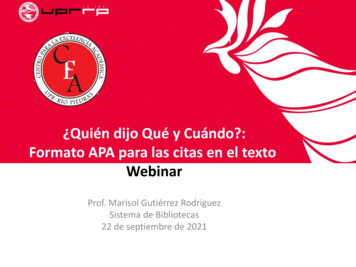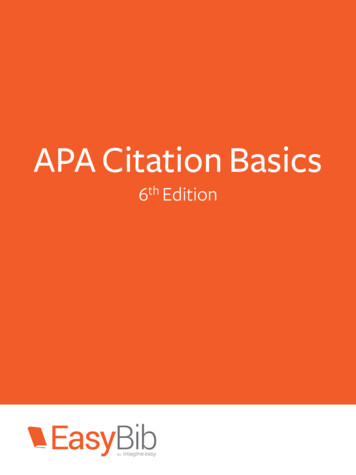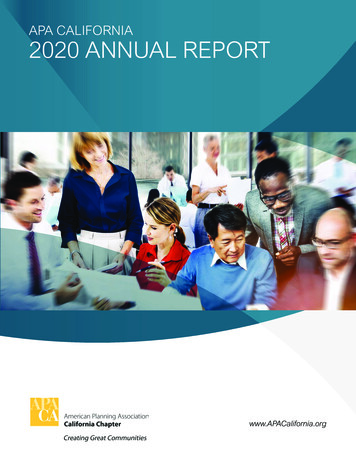
Transcription
APA CALIFORNIA2020 ANNUAL REPORTwww.APACalifornia.org
A Brief History of APA CaliforniaBy Betty Croly, FAICP, Chapter Historian andSteven A. Preston, FAICP, Anniversary Event ChairThe American Planning Association California Chaptertraces its history back more than 75 years: to the CaliforniaPlanners Institute, which existed at least as early as 1933.The organization that we know today is actually the resultof a 1948 merger between the California Planners Instituteand the American Institute of Planners. With that merger,the fledging American Institute of Planners could, for thefirst time, be said to have a ‘national’ reach. Prior to that,the national organization had only about 250 members anda budget of 5,000. The addition of a California Chapter,adding between 100 and 150 members, was a significantaccomplishment–indeed, creating a truly nationalorganization.Mission StatementThe Mission of APA California: Making great communitieshappen through good planning.Toward that end, APA California will: Provide vision and leadership that fosters betterplanning for California. Build public and political support for sound planning. Provide its members with the tools, services andsupport that advance the art and science of planning.The Chapter’s 2019-20 Strategic Plan has three objectives:1. Define the vision and values of the organization and usethem to guide our decisions.2. Identify both short and long term goals and actions toachieve those outcomes.3. Define activities that can be accomplished in the duringthe time frame of the plan that either achieve our shortterm objectives or advance our long term goals.APA California
ContentsChapter President Statement . . . . . . . . . . . . . . . . . . . . . . .2California Chapter Board InformationChapter Board Members . . . . . . . . . . . . . . . . . . . . . . . . . .3Appointed Directors and Affiliate OrganizationsCo-Chapter Historians . . . . . . . . . . . . . . . . . . . . . . . . . . .13Planner Emeritus Network . . . . . . . . . . . . . . . . . . . . . . . .14California Planning Foundation . . . . . . . . . . . . . . . . . . . . .15Management Association and Contractors . . . . . . . . . . . . .3Vice-President Portfolios and ProgramsAdministration . . . . . . . . . . . . . . . . . . . . . . . . . . . . . . . . . . .4Conferences . . . . . . . . . . . . . . . . . . . . . . . . . . . . . . . . . . . .6Diversity and Equity . . . . . . . . . . . . . . . . . . . . . . . . . . . . . .7Policy and Legislation . . . . . . . . . . . . . . . . . . . . . . . . . . . . .8Professional DevelopmentLocal SectionsCentral Section . . . . . . . . . . . . . . . . . . . . . . . . . . . . . . . . .18Central Coast Section . . . . . . . . . . . . . . . . . . . . . . . . . . . .20Inland Empire Section . . . . . . . . . . . . . . . . . . . . . . . . . . . .21Orange Section . . . . . . . . . . . . . . . . . . . . . . . . . . . . . . . . .22Sacramento Valley Section . . . . . . . . . . . . . . . . . . . . . . . . .23San Diego Section . . . . . . . . . . . . . . . . . . . . . . . . . . . . . . .25Distance Education Coordinator . . . . . . . . . . . . . . . . .9Commission and Board Representative . . . . . . . . . . . . . .12Marketing and MembershipUniversity Liaisons . . . . . . . . . . . . . . . . . . . . . . . . . . .122020 Annual Report1
Chapter PresidentJulia Lave Johnston2020 HindsightIf we needed proof that planners areresilient and adaptable, we got it in 2020.Planners are used to problem solving butthe pandemic presented unique challenges.As an organization and as professionalssupporting our communities, planners found themselvespivoting so constantly it was dizzying. But as any dancerknows, the key to successful spinning is to keep your focuson the spot where you want to end up. I believe that APACalifornia succeeded in doing so.I am grateful to the APA California Board and Sectionleadership for their dedication to our members. For almost75 years, APA California has developed programs thatsupport our members and their professional excellence.Our local Sections and the state Chapter reached outimmediately in March 2020 after sheltering in place to learnhow the pandemic was impacting our members and to seeif we could do anything to help. In the months after lockdown, we “Zoomed” in and the Sections and Chaptercollaborated to host over 35 virtual professional andnetworking events. We moved our popular annualconference online, reworking the agenda to include 100sessions and events relevant to the times. Several Sectionsreached out to students and young planners to offer bothprofessional and financial support.No matter how successful our 2020 programming, thecommunal sense of loss often felt overwhelming as it2APA Californiaimpacted both our personal and professional lives. Todifferent degrees, we all felt it. We watched our communities and families suffer and our worlds get increasinglysmaller as we shed gatherings with family and friends andinteractions with colleagues, or experienced job loss, illness,and fear. The pandemic also brought into sharp relief theinequities and discrimination that had and continues toharm many of our communities–deferring dreams,shortening lives, and squandering potential. While APACalifornia had made a commitment to equity, diversity, andinclusion for several years, events in 2020 compelled us tostart asking uncomfortable questions about our profession:how have planning and planners contributed to systemicracism, and what can we do to change the systems thatmake us complicit?As an organization, APA California needs to keep askingthese hard questions and challenging our members to beopen to the conversation. We need to adapt but also beagents for positive change. As we struggle with theseemingly intractable issues facing our communities fromaffordable housing to climate change to equity, we need tobe respectful of each other and stay focused on where wewant to end up.Planners have the knowledge and experience to be leadersin our communities and help find sustainable and equitablesolutions. Let’s plan to lead.
APA California LeadershipChapter OfficersAppointed MembersJulia Lave JohnstonPresidentAsha Bleier, AICPAICP Exam CoordinatorAshley Atkinson, AICPPresident ElectJ. Laurence Mintier, FAICPChapter Historian, NorthernDerek Wong, AICPVP AdministrationSteven A. Preston, FAICPChapter Historian, SouthernHanson Hom, AICPVP ConferencesTess HarrisConference Program CoordinatorMarc Yeber, ASLAVP Marketing & MembershipGreg Konar, AICPDistance Education DirectorEric PhillipsVP Policy & LegislationNicholas P. MaricichNational Policy & LegislativeRepresentativeSharon Grewal, AICPVP Professional DevelopmentEllie Fiore, AICPVP Public InformationMiroo Desai, AICPVP Diversity & EquityJuan Borrelli, AICPCPF PresidentJay Higgins, AICPCommission and Board RepresentativeElizabeth OwenStudent RepresentativeLocal Section DirectorsJennifer Clark, AICPCentral SectionPamela Wu, AICPStatewide Program CoordinatorShane Burkhardt, AICPState Awards Coordinator, SouthernRichard M. Kos, AICPUniversity Liaison, NorthernMirle Rabinowitz BussellUniversity Liaison, SouthernNon-Voting MembersKristen Asp, AICPAPA Board Director, Region 6Francisco Contreras, AICPAICP Commissioner, Region 6Rachel C. RaynorCentral Coast SectionAlexander YeeAPA Student Representative CouncilRegion 6John E. HildebrandInland Empire SectionRobert Paternoster, FAICPPlanner Emeritus Network, PresidentTony MendozaLos Angeles SectionWilliam Anderson, FAICPCalifornia Planning Roundtable, PresidentManagement Association andContract StaffSande GeorgeExecutive Director and LobbyistLauren de Valencia y SanchezExecutive Assistant and LobbyistFrancine FarrellAssociation and ConferenceManagement Services ATEGO ResourcesLaura MurphyAssociation and CertificationMaintenance ServicesNew Horizon EnterpriseDorina BlytheAssociation and Conference GraphicDesign Services, GranDesigns, Inc.Laura DeeAssociation and Conference AccountingServices, Simply Bookkeeping ProMarco A. MartinezAPA California AttorneyBest, Best & Krieger, LLCHeffman Insurance BrokersProfessional Liability InsuranceDick LemonInsurance Agent McClatchy InsuranceChristopher JaimeWebsite ManagementDigital Gear, Inc.Deene AlongiConference Management BusinessEvent StrategistCarol MalinProofreading and Editing ServicesJonathan Schuppert, AICPNorthern SectionAmy VazquezOrange County SectionYassaman ‘Yassi’ SarvianSacramento Valley SectionNancy Graham, AICPSan Diego Section2020 Annual Report3
Vice-President for AdministrationDerek Wong, AICPWhat did you accomplish in yourposition in 2020?This board position is responsible forseveral important tasks includingbudgeting, helping maintain our Chapter'sfinancial health, coordinating andproducing the Chapter Awards Ceremony for the AnnualChapter Conference, and developing a Chapter AnnualReport, among other administrative-related duties throughout the year. We did not miss a heartbeat by pivoting tovirtual in continuing these activities through the help ofseveral Chapter volunteers and our contract staff.The Chapter's finances remained sound in 2020 despitesome reduced revenue. This was coupled with cost-savingsmeasures employed by the Chapter Board. These actionscontributed to a healthy ending income statement andbalance sheet and ensured continued valuable programmingfor our planners. The Awards Ceremony and celebration ofplanning projects statewide enabled the visibility andbroadcast of great planning during a difficult period whilealso highlighting the positive changes in our communitiesinfluenced by planning.Continuation of the Chapter Annual Report provides amedium for APA California to report on its yearlong effortsto have conversations and develop solutions that furtherdiversity, equity, and inclusion (DEI). The Annual Report,developed through key contributions from Board, Section,and affiliated members, provides a summary of activitiesimpacting DEI including legislative positions, diversityactions, and educational workshops and webinars.Expenses.2%28%Operations45%President/VP Portfolios2%Administration25%Section SubventionAPA CaliforniaThe Chapter addressed the pivot to virtual as both achallenge and opportunity to rethink how we provideservices to our members. Through the power of onlinecommunication technology and support by contract IT staff,the Chapter built a foundation to offer virtual services thatreach out to our greater membership.During this challenging year, the Chapter made keydecisions to invest in infrastructure that benefits allmembers and begin the process of strategically thinking ofpriorities and actions that will carry the Chapter and theplanning profession forward in uncertain times.The Chapter addressed diversity head-on and provided astrong platform for open discussion. Both Chapter andSection programming focused on bringing the planningprofession together along with other groups to holdmeaningful dialogue on planning's historical and currentroles regarding DEI issues.Progress occurs when there is a collection of“individualswho have passion, diligence, anddesire to be of service. APA California continuedto make progress in 2020 and chart a course forenhanced and expanded services to ourmembers.”RevenueOther4What did APA California do well in 2020?.07%Other1%Chapter Sponsorship66%NationalMember Subvention26%Conference Profit (Current and Prior Years)7%Public Information Income
2020 Awards of Excellence2020 Implementation (Small Jurisdiction)Yolo County Cache Creek Parkway Plan,Open Space Inventory and Baseline Improvements2020 Comprehensive Plan (Small Jurisdiction)City of Mountain View East Whisman Precise Plan2020 Grassroots InitiativeThe Eagle Rock Association Rock the Boulevard2020 Planning AdvocateSherry Ryan, PhD2020 Planning PioneerMichael Woo2020 Opportunity and EmpowermentSFMTA Bayview Community Based Transportation Plan2020 Planning LandmarkUCLA Department of Urban Planning2020 Implementation (Large Jurisdiction)City of San Diego Climate Action PlanConsistency Checklist2020 Awards of Merit2020 Communications InitiativeSanta Clara LAFCO Communications and Outreach Plan2020 AcademicParking? Lots! Parking over the Minimum in theCity of Los Angeles2020 Best PracticesCentralizing Active Transportation Data Collection Toolswith the SCAG Active Transportation Database2020 Comprehensive Plan (Small Jurisdiction)City of Rancho Santa Margarita Local HazardMitigation Plan2020 Comprehensive Plan (Large Jurisdiction)City of Long Beach General Plan Update Land Use Element2020 Urban DesignSteelCraft Garden Grove2020 AcademicUC San Diego Designathon 1.0 & 2.0: Civic Engagementfor the Improvement of University Public Spaces2020 Innovation in Green Community PlanningYolo Habitat Conservation Plan/Natural CommunityConservation Plan2020 Transportation PlanningMorongo Basin Active Transportation Plan2020 Opportunity and EmpowermentHealth, Wellness, and Environmental Justice Element of thePlacentia General Plan2020 Economic Planning and DevelopmentContra Costa County Northern Waterfront EconomicDevelopment Initiative Strategic Action Plan2020 Transportation PlanningCity of San Diego Parking Reform in Transit Priority Areasfor Multifamily Residential Developments2020 Emerging Planning and Design FirmKounkuey Design Initiative2020 Public OutreachTransform Fresno Community Engagement Plan2020 Innovation in Green Community PlanningSouth San Francisco Collect & Connect –Resilient South City2020 Comprehensive Plan (Large Jurisdiction)City of San Diego Mission Valley Community Plan2020 Planning AgencyCity of Salinas, Community Development Department2020 Planning FirmSWA Laguna Beach2020 Urban DesignSan José Downtown Design Guidelines and Standards2020 Public OutreachSouthern California Association of Governments ClimateAdaptation Communication Strategies2020 Advancing Diversity and Social Changein Honor of Paul DavidoffTamika L. Butler, Esq2020 Implementation (Small Jurisdiction)Del Mar Civic Center2020 Advancing Diversity and Social Changein Honor of Paul DavidoffCity of Salinas Alisal Vibrancy Plan2020 Best PracticesCounty of Ventura Resilient Coastal Adaptation Project2020 Economic Planning and DevelopmentCity of Los Angeles Exposition CorridorTransit Neighborhood Plan2020 Planning AgencyCity of Walnut Creek, Planning Division2020 Annual Report5
Vice-President for ConferencesHanson Hom, AICPWhat did you accomplish in yourposition in 2020?After the Board made the decision topivot to a virtual conference in May, the VPfor Conferences worked with the ChapterPresident to form a Chapter-level Conference Planning Committee that included participationfrom all eight Sections. The conference was planned in lessthan four months and included close to 100 sessions,networking events, and sponsor-hosted sessions. Theconference attracted over 1,100 participants and receivedvery positive reviews in the post-conference survey.The primary responsibility of the VP for Conferences is toorganize a Chapter conference each year that offerseducational sessions covering a range of relevant planningtopics of interest to members throughout the state. Closeto 100 sessions and events were offered at the virtualconference, with about half of the sessions eligible forAICP-CM credits. Additionally, because networking istraditionally an important conference activity for planners,the Conference Planning Committee made a concertedeffort to offer opportunities for attendees to interact byprogramming virtual networking events using the Remomeeting platform.With the horrific events in 2020, systemic racism was aprominent topic of public discourse with reflection andacknowledgement of the deep-seated inequalities in oursociety and a call for change. Not lost in the dialogue wasthe planning profession’s historical role in contributing toinstitutionalized segregation and social and economicdisparities. The 2020 Virtual Conference explored themultiple facets of systemic racism in planning through threeBig Conversations, the annual Diversity Summit, and othersessions.What did APA California do well in 2020?APA California pivoted successfully to a virtual conferencewith a committed Conference Planning Committee. Inaddition to the success of the conference, essential incomewas generated to financially support other Chapteractivities and functions that benefit APA Californiamembers.APA California maintained its commitment to offer timelyprofessional development opportunities to its members byplanning a virtual conference. In addition to the conference,many virtual workshops and networking events wereoffered by the Chapter and Sections.Well-received sessions at the virtual conference exploredand reflected on systemic racism in community planningand the planning profession. There was an emphasis onensuring that session panels reflect the diversity of the APAChapter membership.Other Chapter highlights for 2020 included: a dedicated Board of Directors. updated Chapter contractor contracts. expanded posting of eNews newsletters to providetimely communication to members. an excellent CalPlanner periodical.has truly been an honor to serve as the VP“forItConferencesfor the past four years. I amvery pleased to have delivered four highlyattended and well-received conferences to APACalifornia members. Each conference wasThe Chapter changed to Cvent for event management tointegrate three primary conference features to improve thedelivery of conferences to participants, speakers, andsponsors:unique and I am proud to have implemented online registrationlearning experience. I have especially enjoyed the conference website the conference mobile apptechnology improvements, process efficiencies,and program changes in response to input frommembers. It has been an amazing and rewardingworking collaboratively with the many plannersand contractors that were responsible formaking the conferences a success. I highlyapplaud everyone's creativity, dedication, andtime commitment.6APA California”
Vice-President for Diversity and EquityMiroo DesaiWhat did you accomplish in yourposition in 2020?We organized the virtual Diversity Summitas part of the annual conference: “Lessonsfrom COVID-19, Racial Inequities in PublicHealth, Housing, and Transportation.”A webpage was set up to provide resources on racialjustice and social equity. The webpage includes a list ofbooks, podcasts, articles and toolkits, which I update on aregular basis.We supported Section DEI officers by holding monthlymeetings and addressing issues faced at the Section level.We implemented a mechanism–a demographic survey–thatwill allow us to assess the diversity in our APA leadershipboth at the state level as well as at the Section level. Thesurvey was conducted in 2020 and constitutes the baseline.The surveys will be sent out every year so that we cantrack Board leaderships over time.As a Board, we were able to navigate multiple“criseseffectively, and put up a virtual conferencethat spoke directly to the issues at hand.”In summer 2020, we put out a statement in response to theBlack Lives Matter movement. This statement, along withstatements of Section DEI officers, has been posted on theAPA website. These statements collectively ensure to ourmembers our stand on racial justice and social equity.2020 Annual Report7
Vice-President for Policy and LegislationEric Phillips, JDWhat did you accomplish in yourposition in 2020?Although I missed attending in-personevents, I am pleased we were able to hostChapter-wide and Section-focused webinars on legislative updates to keep ourmembers informed about new developments inSacramento.I worked closely with the Chapter lobbyists on billsimportant to planners. We sponsored legislation to addressa streamlined subdivision process for "missing middle"housing, which unfortunately did not pass. However, we alsosupported a number of bills that did become law, includingrevisions to make it easier for planners to work asindependent contractors, changes to hearing and CEQArequirements during the pandemic, and other planningprocess bills.participant throughout the process, providing support forbills addressing housing production, wildfire planning andrecovery, and tenant protections, while watching otherbills and revising SB 35, density bonus, and RHNAmethodologies.What did APA California do well in 2020?APA California offered chances for virtual engagementand networking throughout the year, providing crucialinformation and opportunities for fun for its members.as part of the APA Board continues to“beServingenjoyable and engaging. Even duringexceptionally trying years, planners never shyaway from discussing big ideas, thinking throughIn anticipation of the new two-year legislative term, APACalifornia updated our legislative platform to prioritizepolicies regarding diversity, equity, and inclusion.issues, and working to identify ways to supportThe 2020 Legislative Session was upended, like everythingelse in our world, by the COVID-19 pandemic. As a result,many fewer bills moved through the session than in atypical year. Nevertheless, APA California remained an activestate!8APA Californiatheir communities. It is great to be part of theprocess in supporting their work throughout the”
Distance Education CoordinatorGreg KonarWhat did you accomplish in yourposition in 2020?Prior to COVID-19, livestreaming andrecorded materials were especially helpfulin reaching planners who found it challenging to attend in-person events due todistance or other factors. During COVID-19, when inperson events were no longer available, the webinars andrecorded materials became even more important. Plannerstook advantage of the new virtual platforms to shareexperiences on how they and their organizations werecoping during the COVID-19 lockdown. For thosepreparing for the AICP exam or needing CM credits, theavailability of distance education became a lifeline.Achievements included: Successfully livestreaming and recording a 12-hour, fourpart AICP exam training course with the first threesessions taking place in person and the final sessiondelivered as a webinar.the Chapter great confidence that the virtual conferencewould be a success—and it was.The shift to virtual required by COVID-19 created anopportunity for the Chapter to showcase an existing butunderutilized communication tool in support of planners.While the COVID-19 emergency has abated, all plannershave become familiar with the strengths and challenges ofdistance education. Its legitimacy has been established. TheChapter and Sections are now in much stronger positionsto use it for the benefit of the planning profession.Given the exceptional effort by the Sections to createvirtual workshops on diversity, inclusion, and social justicethroughout the year, and because these themes pervadedthe entire virtual Chapter conference, 2020 will be remembered as an extraordinary year.For the first time in Chapter history, nearly all“Sectionand Chapter professional development Assisting the Sections in making available non-conferencewebinar recordings on YouTube—a first for the Chapter.events in 2020 were made available live to Providing support to the conference planning team inorganizing the 2020 Virtual Conference.ushers in a new era of more inclusive and Editing and posting all conference session recordings toYouTube for on-demand viewing by conferenceregistrants.ities. As a result, Chapter members can now look Adding the conference sessions to the Chapter's ondemand catalog and setup registration process.anyone who chose to attend. The pivot to virtualaccessible professional development opportunforward to a robust set of virtual options evenafter live events resume.”Following the Black Lives Matter movement, event contentshifted heavily to issues of diversity, equity, and socialjustice. Discussion on these topics was facilitatedthroughout the year by thoughtful and engaging webinarevents hosted by the Sections and later during theChapter’s virtual conference.What did APA California do well in 2020?APA California pivoted sharply to distance educationplatforms as soon as the COVID-19 pandemic hit. Becausethe virtual platforms were available to all, a greater level ofcooperation and accessibility developed. All Sectionsparticipated. The shift to virtual helped level the playing fieldfor smaller Sections and, in some cases, such as the CentralSection, dramatically increased event participation.Additionally, experience gained with the Section events gave2020 Annual Report9
Distance EducationBelow is a list of all non-conference, distance education events recorded in 2020. Most are posted on the Chapter YouTube site. Thislist does not include the 32 recordings from the 2020 Conference.NON CONFERENCE WEBINARSATTENDEES*# OF WEBINARSVIEWS OF RECORDINGSJanuary - June: Estimate 3,48014 webinars1,836July - December: Estimate 1,39512 webinars723*Zoom statistics shown for the second half of 2020.WEBINARSEVENTHOSTLINK AND STATUSDATENorthern and d4-1-20Los Angeles, Orange, InlandNot posted on YouTube4-4-20Sacramento s Angeles and ern sted5-12-20Orangehttps://youtu.be/w3 zapWW3FEUnlisted5-20-20Los Angeleshttps://youtu.be/abPCA Ycz7gPublic5-20-20Becoming AICP: An AICP Application Preparation WebinarSan n Everything Breaks #2: Conversations about Realism,Idealism, and the Planning Profession in Uncertain TimesLos rthern sted6-18-20When Everything Breaks #3: Conversations aboutthe Role of Transportation Equity amid COVID-19Response and Recovery EffortsLos munity Engagement 2020: Reevaluating HowWe Collaborate with CommunitiesSacramento lanning and Health in the Time of COVID-19AICP Study SessionPlanning Through The COVID-19 Crisis: How AreWe Adapting in These Uncertain Times?Impacts of COVID 19 in the Central SectionCFP Scholarship Informational WebinarPlanning and Health in the Time of COVID-19:Transportation and Public SpacesDeveloping SB 743 GuidelinesWhen Everything Breaks #1: Conversations onChallenge, Opportunity and Equity in Uncertain TimesAddressing Equity, Diversity, and Inclusion inOur Local CommunitiesPlanning and Health in the Time of COVID-19:Homelessness and Affordable HousingPlanning in the Era of Preemption10APA California
Two Proposed Visions for the San DiegoSports Arena PropertySan cramento Valleyhttps://youtu.be/eVB hAGcQUPublic7-31-20Los cramento os an acramento The APA California Membership 'State of the Profession'Survey, Part 0Visualizing 11-12-20San Diegohttps://youtu.be/COmWY iKusoUnlisted11-19-20Sacramento ValleyNot posted on YouTube11-20-20Los AngelesTo be determined12-16-20SB 743: Reflections on LOS, Transition to VMT, and thePotential for VMT Mitigation BanksPlanning for Change in Orange CountyWhen Everything Breaks #4: How Can DigitalPublic Spaces Equitably Serve CommunitiesDeveloping Urban ResilienceOur County - Equity in SustainabilityCONFERENCE BREAK SEPTEMBER 14 - 16, 2020Town and Country Hotel Redevelopment andSan Diego River ParkReflecting Back and Looking Forward on Diversity,Equity, and Inclusion in PlanningViews on Post-COVID Planning WorldPaving the Way: Safe Mobility and ActiveTransportation Alternatives for the FutureWhen Everything Breaks: Food Systems & COVID-19LIVESTREAMSEVENTAICP Exam Training Course(8 parts: 6 livestreams and 2 webinars)Additional information available on APA Californiawebsite at: ent/on-demand-aicp-exam-training-course/HOSTLINK AND STATUSDATESan Diego andCentral SectionsAll unlisted except Part 2 is public4-25-20Part 1: Planning History, https://youtu.be/2LimlfiJnZQPart 2: Overview, https://youtu.be/8T9GYqclicIPart 3: Plan Making, https://youtu.be/hp3W4e-dh 8Part 4: Regulatory Law, https://youtu.be/gtvNO-BTCS0Part 5: Ethics, https://youtu.be/WV1wAyWKbEoPart 6: Public Participation, https://youtu.be/8yrKZUaxfRoPart 7: Planning Trends, https://youtu.be/Y9e ZEHXgmMPart 8: Leadership, https://youtu.be/U4UTl10WPFk2020 Annual Report11
Commission and Board RepresentativeJay D. Higgins, AICPWhat did you accomplish in yourposition in 2020?In May 2020, we pushed out one of ourfirst virtual and interactive webinars forCommission and Board members. It was astraightforward subject that highlightedbest practices for online hearings, back when they wererelatively new.quality” but it provided context to what was being askedfor, and why it mattered.Think about your audience and who your“customersreally are. They are more than thoseat the hearing—they are the underrepresentedcommunity members who are working hard andDuring the virtual state conference, we doubled down againon the subject of online engagement and hearing protocols.But so much had changed up to September that our panelshifted away from the logistics of virtual proceedings andonto something different: how to leverage the virtualplatform to reach our underserved communities.cannot devote the time to decode your policiesIt was a real eye opener to ha
professional development opportunities to its members by. planning a virtual conference. In addition to the conference, many virtual workshops and networking events were offered by the Chapter and Sections. Well-received sessions at the virtual conference explored. and reflected on systemic racism in community planning. and the planning profession.

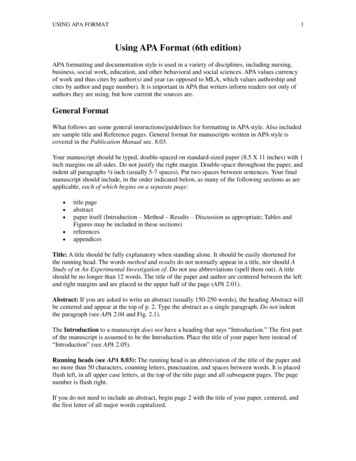
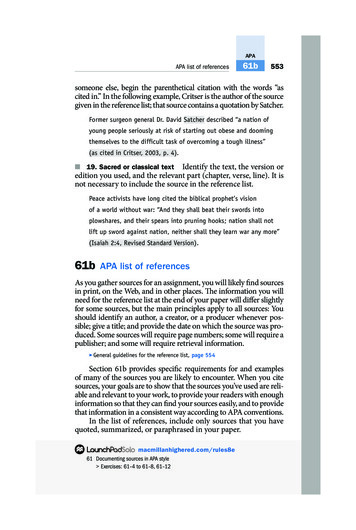
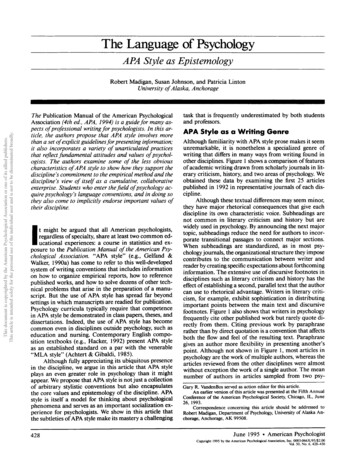
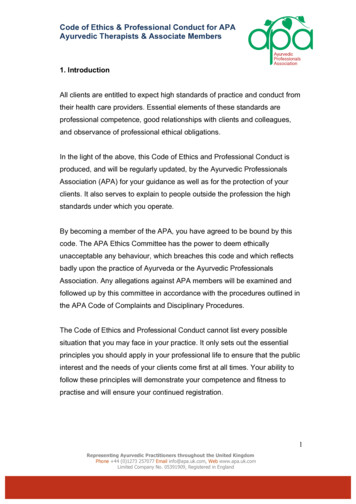
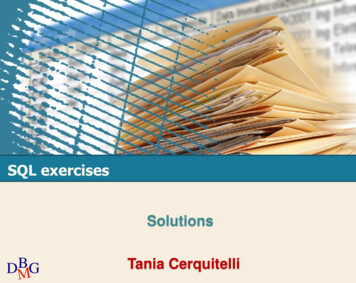
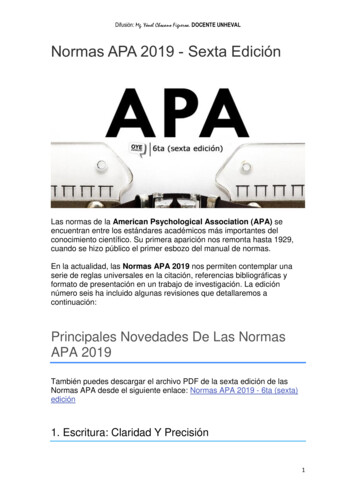
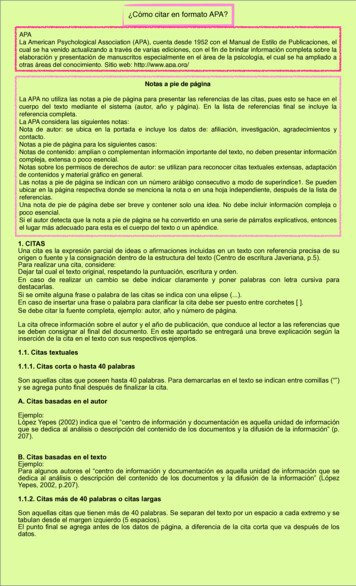

![Normas APA: Guía completa [2020] - UNEG](/img/65/normas-apa-2020.jpg)
